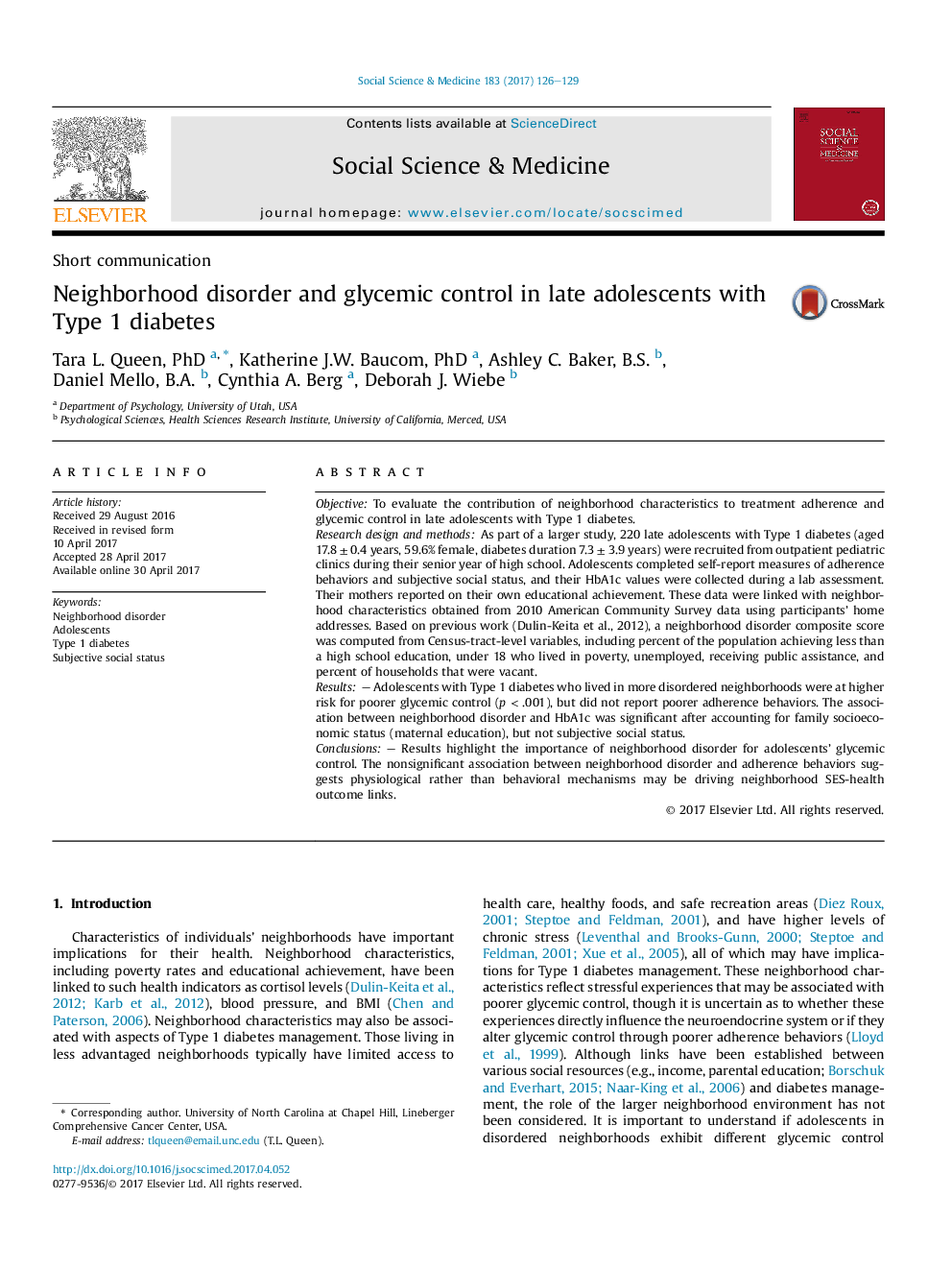| کد مقاله | کد نشریه | سال انتشار | مقاله انگلیسی | نسخه تمام متن |
|---|---|---|---|---|
| 5046563 | 1475986 | 2017 | 4 صفحه PDF | دانلود رایگان |
- Socioeconomic status has implications for late adolescents' diabetes management.
- Previous work has focused on family factors (e.g., parental education).
- This study examined neighborhood disorder-diabetes management associations.
- Greater neighborhood disorder was associated with poorer glycemic control.
- Both family and neighborhood SES are related to adolescent diabetes management.
ObjectiveTo evaluate the contribution of neighborhood characteristics to treatment adherence and glycemic control in late adolescents with Type 1 diabetes.Research design and methodsAs part of a larger study, 220 late adolescents with Type 1 diabetes (aged 17.8 ± 0.4 years, 59.6% female, diabetes duration 7.3 ± 3.9 years) were recruited from outpatient pediatric clinics during their senior year of high school. Adolescents completed self-report measures of adherence behaviors and subjective social status, and their HbA1c values were collected during a lab assessment. Their mothers reported on their own educational achievement. These data were linked with neighborhood characteristics obtained from 2010 American Community Survey data using participants' home addresses. Based on previous work (Dulin-Keita et al., 2012), a neighborhood disorder composite score was computed from Census-tract-level variables, including percent of the population achieving less than a high school education, under 18 who lived in poverty, unemployed, receiving public assistance, and percent of households that were vacant.Results- Adolescents with Type 1 diabetes who lived in more disordered neighborhoods were at higher risk for poorer glycemic control (p < .001), but did not report poorer adherence behaviors. The association between neighborhood disorder and HbA1c was significant after accounting for family socioeconomic status (maternal education), but not subjective social status.Conclusions- Results highlight the importance of neighborhood disorder for adolescents' glycemic control. The nonsignificant association between neighborhood disorder and adherence behaviors suggests physiological rather than behavioral mechanisms may be driving neighborhood SES-health outcome links.
Journal: Social Science & Medicine - Volume 183, June 2017, Pages 126-129
